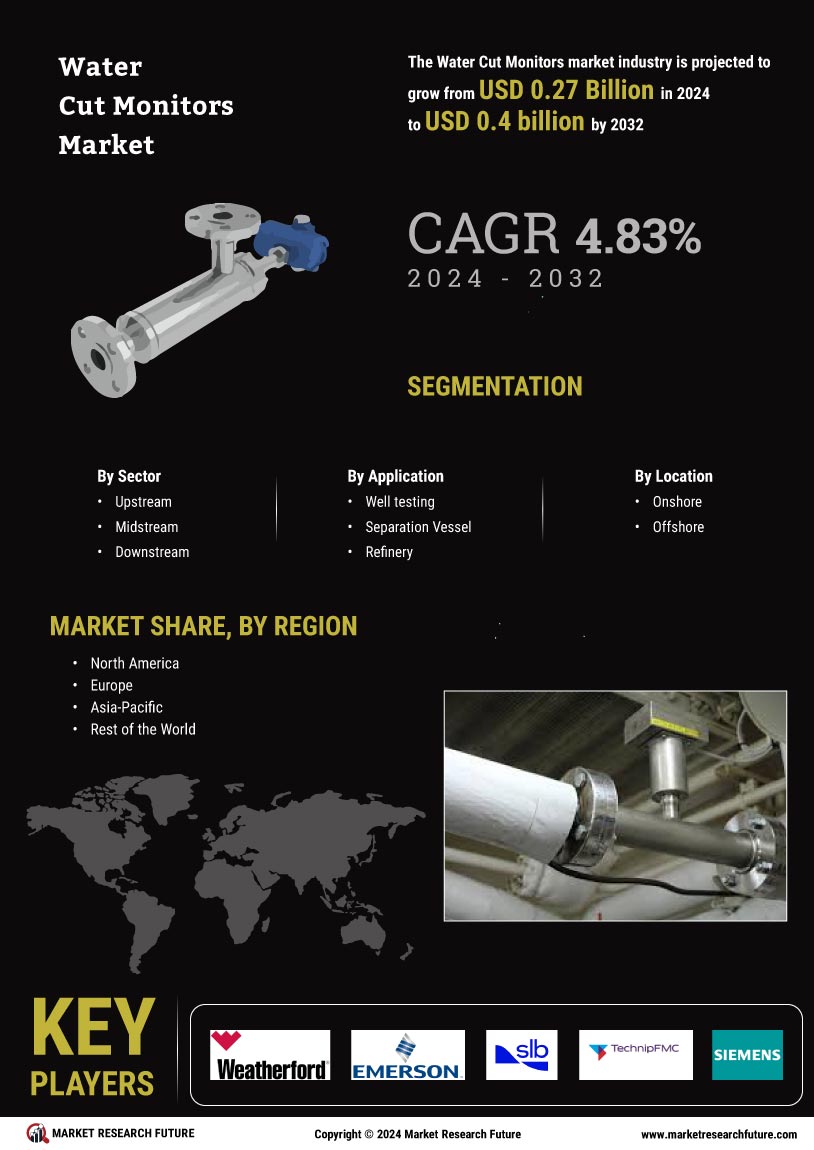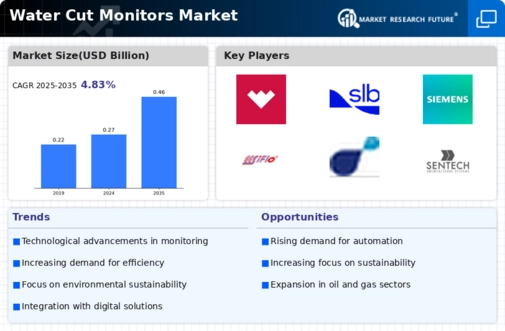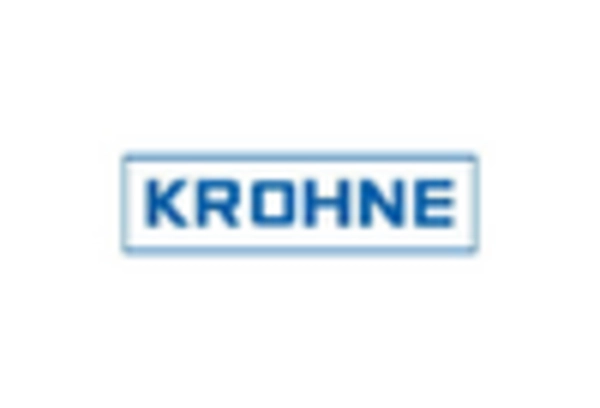Rising Demand for Oil and Gas
The Water Cut Monitors Market is experiencing a surge in demand driven by the increasing need for oil and gas exploration and production. As energy consumption rises, companies are compelled to enhance their extraction processes, leading to a greater reliance on water cut monitors. These devices are essential for accurately measuring the water content in crude oil, which is crucial for optimizing production efficiency. According to industry reports, the oil and gas sector is projected to grow at a compound annual growth rate of approximately 5% over the next few years. This growth is likely to bolster the Water Cut Monitors Market, as operators seek to minimize operational costs and maximize output through precise monitoring solutions.
Growing Focus on Operational Efficiency
The Water Cut Monitors Market is increasingly driven by the imperative for operational efficiency within the oil and gas sector. Companies are under constant pressure to reduce costs while maintaining production levels, prompting a shift towards more efficient monitoring solutions. Water cut monitors play a critical role in this context, as they enable operators to identify and address inefficiencies in real-time. By accurately measuring water content, companies can optimize their extraction processes, leading to reduced operational costs and improved profitability. The market is projected to grow by approximately 8% as organizations prioritize technologies that enhance operational efficiency and drive competitive advantage.
Increased Investment in Oilfield Development
The Water Cut Monitors Market is benefiting from heightened investment in oilfield development projects. As exploration activities expand into new regions, the need for effective monitoring solutions becomes paramount. Companies are allocating substantial resources to enhance their operational capabilities, which includes the deployment of water cut monitors to ensure optimal extraction processes. This trend is particularly evident in emerging markets where oilfield development is gaining momentum. Analysts predict that the investment in oilfield infrastructure will lead to a 6% increase in demand for water cut monitoring technologies, as operators strive to maximize yield and minimize waste in their production activities.
Regulatory Compliance and Environmental Standards
The Water Cut Monitors Market is significantly influenced by stringent regulatory frameworks aimed at environmental protection. Governments worldwide are implementing regulations that mandate the monitoring of water content in oil production to prevent environmental degradation. Compliance with these regulations necessitates the use of advanced water cut monitoring technologies. As a result, companies are increasingly investing in these systems to ensure adherence to legal standards and avoid potential penalties. The market for water cut monitors is expected to expand as organizations prioritize compliance and sustainability, with estimates suggesting a potential market growth of 7% annually in response to these regulatory pressures.
Technological Innovations in Monitoring Solutions
Technological advancements are reshaping the Water Cut Monitors Market, as innovations in sensor technology and data analytics enhance monitoring capabilities. The introduction of smart water cut monitors equipped with real-time data transmission and predictive analytics is revolutionizing the way companies manage their oil and gas operations. These innovations not only improve measurement accuracy but also facilitate proactive decision-making, thereby optimizing production processes. The market is witnessing a shift towards integrated monitoring solutions that combine water cut measurement with other parameters, potentially increasing the overall market size by 10% in the coming years as companies seek comprehensive solutions to enhance operational efficiency.


















Leave a Comment